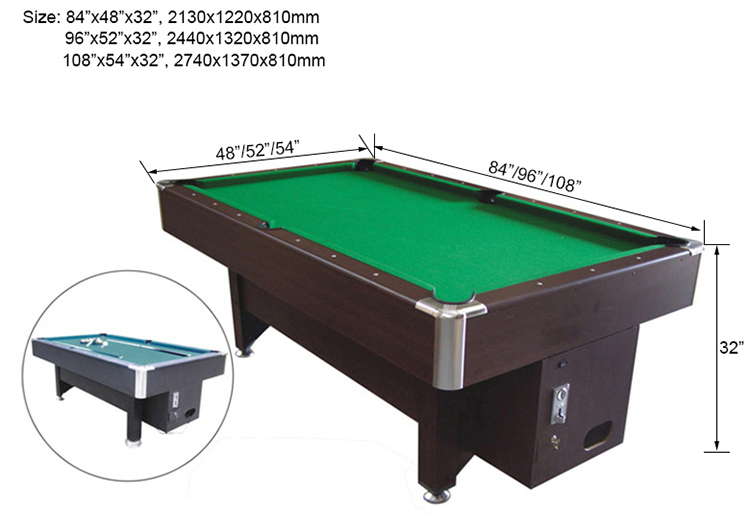Billiards vs. Pool vs. Snooker: the distinctions between them
In the world of cue sports, the terms "billiards," "pool," and "snooker" are often used interchangeably, but they actually refer to distinct games with their own unique rules, equipment, and histories. For those curious about the nuances that set these games apart, let's delve into the evolution and characteristics of each, shedding light on the fascinating world of cue sports.
A Glimpse into History
The origins of billiards trace back to the 15th century when it was initially played as a lawn game reminiscent of croquet in Northern Europe, primarily among nobility. Over time, billiards evolved into an indoor game played on wooden tables covered with green cloth, aiming to simulate grass. The term "billiard" itself stems from the French words "billiart" (wooden sticks) and "bille" (ball), reflecting its early wooden stick and ball origins.
As the game transitioned indoors, cue sticks emerged in the late 1600s, providing players with a more precise way to maneuver the balls. The term "cue" originated from the French word "queue," meaning "tail," referencing the handle of the mace initially used to strike the balls. Concurrently, the term "pool" evolved from its association with betting parlors in the 19th century, where pool tables provided entertainment between horse races, eventually becoming synonymous with billiards.
Distinct Game Variants
Carom Billiards: Carom billiards, often referred to simply as "billiards," is a cue sport played on tables with cushioned rails, where players aim to strike the cue ball to make contact with both other balls on the table, scoring points through precise maneuvers.
Pocket Billiards (Pool): The most widely recognized form of cue sports internationally, pocket billiards, commonly known as "pool," features tables with six pockets integrated into the rails, facilitating gameplay with sixteen balls—fifteen object balls and a cue ball. Pool tables offer diverse game variants with their own rules and equipment.
Snooker: Snooker distinguishes itself with its use of pocketed tables, notably larger than those used in pool, particularly in England where twelve-foot tables are standard. This game involves fifteen red balls, six colored object balls, and a cue ball, requiring strategic play to pocket balls in a specific sequence for optimal scoring.
Key Differences in Equipment and Rules
Balls: The number and composition of balls vary across billiards, pool, and snooker. Snooker employs twenty-two balls, including a white striker ball, fifteen red balls, and six colored object balls. In contrast, billiards utilizes three balls—white, yellow, and red—while pool typically features sixteen balls, including a cue ball and a mix of solid and striped object balls.
Tables: Carom billiards and pool games can be played on tables ranging from seven to nine feet, with carom tables lacking pockets while pool tables feature six integrated pockets. Snooker tables, notably larger at twelve feet in England and ten feet in America, offer ample space for strategic play.
Rules: Each cue sport boasts its own set of rules governing gameplay. Carom billiards focuses on scoring points through precise ball maneuvers, while snooker organizes gameplay into frames, requiring players to pocket specific balls in sequence to accrue points. Pool games vary widely, with variants such as straight pool emphasizing point accumulation through pocketing balls in designated sequences.
Essential Equipment Insights
Cloth: Pool table cloth, also known as felt, comprises wool and nylon blends, with high-quality worsted cloth offering optimal playing surfaces. Tables feature quarried slate covered with tightly-woven wool cloth, surrounded by vulcanized rubber cushions to facilitate ball rebounds.
Racks: Triangular racks, often referred to as triangles, serve as essential equipment for positioning billiards balls before gameplay commences. Modern variations like template racks feature precision cut-outs to secure balls in place, catering to various game variants such as eight-ball, straight pool, and snooker.
Cues: Cues are tapered sticks utilized to strike the cue ball, essential across billiards, pool, and snooker. Ranging from 57 to 59 inches in length and weighing between 16 and 21 ounces, cues are predominantly made from wood, though materials like graphite and carbon fiber offer alternative options.
Popularity and Cultural Significance
Billiards: Billiards enjoys popularity in countries like Canada, Australia, and Taiwan, offering a diverse range of game styles and social opportunities for enthusiasts.
Pool: Pool reigns supreme in the United States, with its casual and social nature making it a fixture in bars and social spaces across the country.
Snooker: Snooker holds significant cultural importance in the United Kingdom, boasting a dedicated following and regular televised coverage, particularly on BBC TV.
In conclusion, while billiards, pool, and snooker share common roots in cue sports, each game offers its own unique experience, equipment requirements, and cultural significance. Whether you're a seasoned player or a curious novice, exploring the rich tapestry of cue sports promises a journey filled with excitement and camaraderie.

